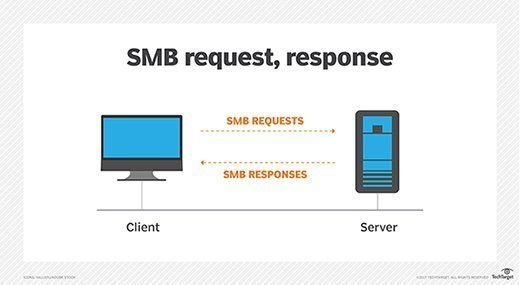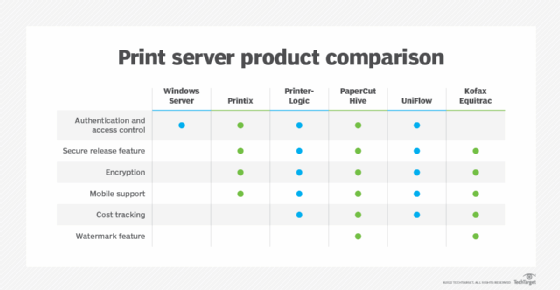print server
What is a print server?
A print server is a software application, network device or computer that manages print requests and makes printer queue status information available to end users and network administrators. Print servers are used in both large enterprise and small or home office (SOHO) networks.
Print servers accept print requests from computers, queue the requests, and then send the requests to specific printers. Print servers can also be physical or cloud-based.
Print servers help accommodate print requests that are received faster than can be handled. If an organization has many devices, or has these devices in different geographical locations, then print servers help provide more management and control over print requests.
In a large organization, a single dedicated computer acting as a print server might manage hundreds of printers. In a small office, a print server is often a specialized plug-in board or small network device about the size of a hub that performs the same function as a dedicated print server, but frees up valuable disk space on the office's limited number of computers.
How does a print server work?
Software required for a print server can be either part of a server, network device, application or installed onto a computer operating system. The software is what enables dedicated network devices or computers to manage network printing.
- If servers are used, then the server connects to computers over a network, enabling them to communicate with available printers.
- Dedicated print server devices are connected to a printer through a USB, parallel or wireless connection. Devices typically have a connection to the local area network (LAN) and multiple other printers.
- Print servers installed on a computer are networked with multiple printers.
- Printers might also have built-in print servers.
Print servers operate on a client-server model. Print servers directly connect to network printers to maintain control over print queues. When a user under an authorized client requests to print a file, the print server is what receives the request. The print server then processes request data like file and print specifications. The request is then sent to a specific network printer and queued. The files are then printed in the queued order on the specific printer.
Print servers might also support different standard and proprietary printing protocols. Printing protocols communicate between the clients making requests and the printers processing those requests.
These protocols are split between the following:
- Dedicated protocols, such as Jetdirect or Line Printer Daemon, which handle specific print operations.
- Generic protocols, such as Server Message Block (SMB), which treat printers as remote disks.
- Wireless protocols, such as AirPrint, which enable printers to be used by devices wirelessly.

Why an organization might need a print server
Print servers are most useful for organizations that have multiple printers and the need to print large amounts of documents. In this instance, they aid in managing the print queues for each connected printer. Other reasons why print servers are useful include the following:
- For managing multiple printers from a centralized location. This makes monitoring printer health, updating software and preventing bottlenecks easier for printers spread out in an office or across buildings.
- To improve efficiency, as print servers can manage the queue of each connected printer. Print servers can also send requests to faster local printers to better accommodate users.
- Processing power needed for printers to manage large queues are offloaded to a specific device.

Downsides of utilizing a print server
Print servers do have downsides, however. One major downside is that print servers might become a venerability point for businesses. If the server encounters a fault, that fault would then affect all the printers connected to the print server.
As an example, Windows Print Spooler is a Microsoft executable file that manages the printing processes. It enables each system in the service to act as a print or administrative client, as well as a print server. Print Spooler suffered a zero-day vulnerability that enabled attackers to gain system privileges on computers. This vulnerability is part of a bug called PrintNightmare, which targets the configuration settings for Windows Print Spooler and print drivers.
History of print server technology
Originally, terminal servers enabled dozens of endpoints to be connected to a common connection point or wide area network (WAN). As terminal servers advanced, printers began being connected to the servers, and terminal server designers eventually started adding support for print queuing. As time went on, having dedicated print servers became more of a common practice.
Print servers became an essential part of networks, but today they may not be as essential as they once were. Some organizations today might only need to rely primarily on digital files leaving hard copies as less important or focused on. Additionally, the capabilities of print servers are sometimes prepackaged in other network appliances.
There are also "serverless" printing options available through the cloud. Users can manage a print through a public or private cloud service, where a print server is hosted in a different location and users gain access through the internet. In this option, users don't need to own or maintain a physical print server.
For organizations that rely on printing physical documentations, a print server is still an option but is an organizational decision.
Learn more about print server alternatives that include examples of cloud-based print services in this article.
